|
|
|
Frame Drum
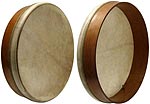
TMRT017
Daire 17" modern tuning system by inflation |
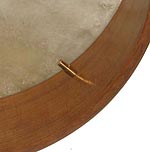 |
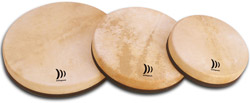
TMRT100
tunable 40/50/60cm |
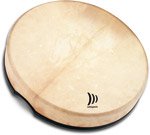
TMRT200
Def |
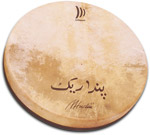
TMRT300
Pandariq |
The history of the Frame Drum reaches back a long time, we know that from ancient tales of female priests and goddesses. They were chosen women who used this ritual instrument three or even four thousand years ago. The Frame Drum can thus be seen as a symbol of feminism.
This drum with a narrow frame and remarkably large beating surface is especially well-known in Arabian countries and North Africa. There it is called the Bendir, Tar, Daf or Riq.
According to the old tradition a wooden frame is covered with an animal skin, which makes the drum sensitive to climatic conditions. In high humidity the skin loses its tension rapidly and the frame can warp. Therefore some drums like the Irish Bodhran have a wooden cross that stabilizes the frame. Other frames are thick and stable. People who lived in tune with nature solved this problem in a natural way: there was a fire in the middle of their gathering, so before playing the skin was warmed up and thus tuned.
But the modern musician wants to be independent of climatic moods and therefore he prefers a skin made from plastic. Highly developed materials imitate the natural skin almost perfectly and special frames offer tuning gadgets. This technical advancement has brought in many instruments of the highest quality.
 |
Shaman Drum
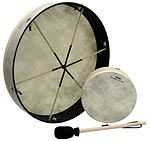
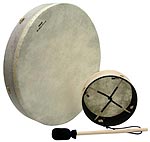
TMST100
Buffalo drum, synthetic Remo skin, 5 sizes, incl. striker |
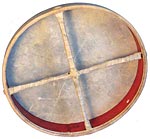

TMST200
Simple goat skin, white or colourful Batik design, 4 sizes, incl.striker |
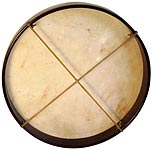
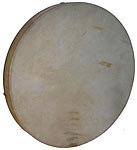
TMST300
Gong drum, very light, 7 sizes from 25cm to 75cm |
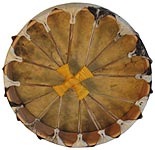
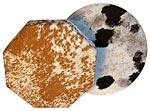
TMST400
Cow hide with hair, very solid, traditional tensioning system |
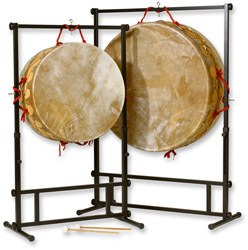
TMST500
Gong Drum with stand, 60 and 90cm |
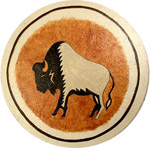 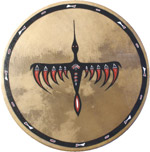
TMST600
Various North American First Nations styles |
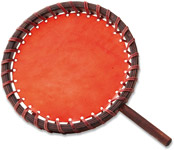
TMST700
Alaska Fire Drum, ideal for sweat lodges |
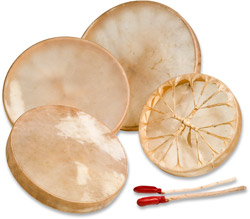
TMST800
Traditional Native Indian, buffalo or cow hide, smooth, very robust, |

ZUSC001
Stick |
Shaman drums are religious-ritual instruments of native peoples, as found in Scandinavia, Siberia, North America and several other regions of the world. The Shaman travels with the help of the drum into the spiritual worlds. The monotonous drum rhythm produces a trance-bound state to enable communication with beings and powers from beyond the physical and mental world. Nowadays shamanistic drum journeys have become widely popular where the participants are led by an experienced guide into the planes of inner visions and dreams.
Depending on their origins the drums differ in construction and appearance. A solid wooden frame is covered with a thick animal skin from either buffalo, elk, cow, deer or goat. Thin strips of skin or sinews hold the skins in the right position and give the necessary tension. The strikers are normally handmade too: a carved stick and soft leather used for the beater head. Sometimes they are decorated with pearls and colored cords. According to Native American tradition the drum is often painted with ritual symbols like eagle, buffalo, kokopelli and others. Shaman drums are available in different sizes and covered with one or double skin. Their magical sound is fascinating.
In the modern world many natural materials are replaced by synthetic materials, so new types of drums have been made in order to guarantee stability and independence from weather. They offer an authentic sound and look.
Tuneable drums are available on request.
 |
Table Drum
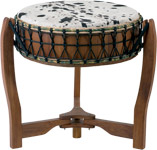
|
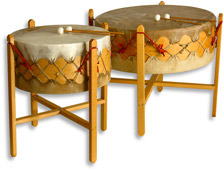 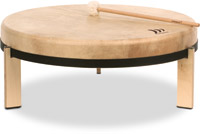
TMTT100 Kambala 60cm incl. Stand
TMTT200 Boehme 90cm incl. Stand
TMTT300 Allton 80cm, 4 fixed legs
TMTT400 Schlagwerk, 60cm Frame Drum on 4 stands, low height
|
The Table Drum is used successfully in all kinds of therapy (music, linguistic, psychic therapy) and rhythmical-musical education. Its strong and deep frequencies bring most people down to earth, giving them a balanced feeling. The powerful vibrations are especially felt in the lower parts of the body.
The Table Drum can easily be played by children in a standing position. A carefully selected animal skin supplies a warm and powerful sound. As it is quite solid too it also resists the concentrated power when the players want to give expression to an outburst of energy. The drum is perfectly suitable for group activities when several players strike the skin simultaneously with strikers or hands.
 |
Bodhran
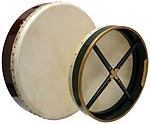
TMBD036 |
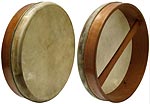
TMBD017 17" |
The Bodhran is an Irish frame drum. Its diameters start at 20cm and go up to 50cm, making it an exceptionally big drum. The wooden frame is covered with goat skin and usually strengthened with a cross in the centre. Modern Bodhrans offer a mechanical tuning system which helps the player either to create a low bass sound or a higher sound.
Usually the Bodhran is played in a sitting position and held upright on the knees of the player. With the right hand the Bodhran is played with a wooden striker, the so-called beater, tipper or stick. With the left hand one touches the inside of the skin and changes the height of the tone by slight pressure and different hand positions. To use the stick needs a lot of practice as the technique is quite unique and sophisticated: the stick whirls over the skin very fast.
 |
Pandeiro

TMPA100 |
This very popular typical Brazilian Bell Drum is mostly heard in Samba and Capoeira, the fighting game of Brazil. Its origin is in the Arabian area though. In a solid frame made of plastic or wood there are a couple of flat metal plates fixed in pairs, whose size and quality fundamentally influence the sound. The tightly stretched skin is either animal or plastic skin. The experienced musician produces the typical tips and slaps with the help of the thumb and the ball of the hand
 |
Tambourine
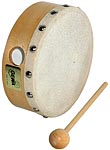
TMTA100
small
|

TMTA120
small
|
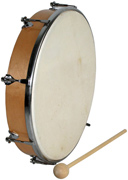
TMTA130
tunable
|

TMTA200
small w/ bells
|

TMTA208
8S, D25cm
|
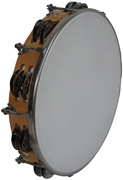
TMTA216
16S, D26cm
|
The Tambourine or Bell Drum is a percussion instrument. It consists of a one-sided covered frame made from metal, plastic or wood, with vaulted bells, mostly in pairs. The Tambourine was already known in Ireland and Egypt a very long time ago and was commonly used for dancing. Today this manifold instrument is used in almost all music styles and pedagogy. The drum can be played with the fingers, the palm, the fist, or a striker.
 |
Djembe
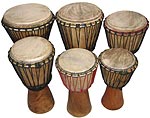
TMDJ017 17,5cm
TMDJ022 22,5cm
TMDJ025 25cm
TMDJ030 30cm
TMDJ035 35cm |
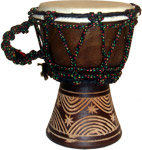
TMDJ100 simple kids drum, 20-40cm |
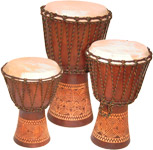
|


ZUDG001 Djembe Strap
ZUDG002 Djembe Strap |

ZUDS001 Djembe Cord
TS1040
|
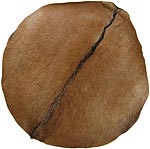
Djembe Skin
ZUDF002
half goatskin, tanned
SK501 |
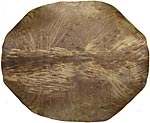
Djembe Skin
ZUDF001
tanned, round, thin
GR 1694 |
The history of the drum is linked with the history of man. The stroke on the drum gives us the rhythm of earth. It reminds us of its heartbeat – of our own heartbeat.
The Djembe is a symbol of the power, life and pulse of Africa. Almost nobody can withstand the magic of an African drumming group. They create complicated interwoven rhythms that seem unusual for the Western ear but can be felt in every cell of the body.
This is the most popular drum of Africa. Its origin is in Guinea, later on it was found in Senegal, too. The wooden body in the shape of a cup is carved out of one piece and covered with a sophisticated strap system for tuning. This makes it possible to retune the drum or to change the skin. Modern Djembes are made from plastic with a more developed tuning system.
Traditionally the Djembe is played in the daily life of a tribe and closely linked with the ceremonies and rituals of African people. A typical way to play is the combination of many Djembes with the bass drums and the bell which are essential for the basic beat.
 |
Darbuka
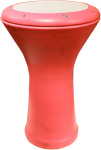
TMDB200
vinyl
in red or blue |

TMDB300
Turkish style
aluminum/copper |

TMDB400
mother of pearl
natural skin |

TMDB500
Turkish style
aluminium |

TMDB600
Egyptian style
coloured aluminium |
The Darbuka is a drum from the Arabian culture. As it is spread across many Oriental countries its names vary: Derbouka, Doumbek, Tarabuka or Tablah. It has a goblet-shaped body which is traditionally made from clay and with a fish or goat skin. The body resembles the African Djembe, whose mother the Darbuka actually is, but it is played in a totally different way.
Modern Darbukas often consist of metal, like aluminium, brass and copper. The skins are then made from plastic, but in order to produce a warmer, deeper sound, natural skins are used too. The musician places the drum sideways onto his knee and with sophisticated finger techniques he plays crisp "Tek´s" and sonorous "Doum´s".
The origin of the Darbuka lies in Oriental music where the distinctive rhythms (Maquams) are common. Later on it found its way into Western music where it became a very popular instrument.
 |
Talking Drum
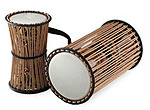
TMTD100 |
The Talking Drum or Dundun originates in Nigeria. With the help of drumming speech, important messages could be delivered in Africa within a few seconds. The Talking Drum fulfils an essential task as a “jungle phone”.
Its body has the shape of an hour glass and is covered with two skins which are connected by leather straps. The drummer holds the instrument under one arm and strikes the skin with a special bent stick. By pressing and loosening the straps, the height of the sound can be changed. In that way the player creates interesting patterns and charming glissandi.
 |
Bongos

TMBO100 |
The Bongo comes from Cuba. Actually it is made from two small drums linked to each other. They are made from wood, fibreglass, other plastic, or even clay. Most Bongos are tuneable using a special system which is similar to that of a Conga.
Both drums are of the same height, the diameter of the skin can vary between 15 and 25 cm. The player holds the drum tightly between the knees while the bigger drum is close to the dominant hand. Usually one plays the Bongo with the fingers, sometimes with light drum set sticks.
 |
Udu
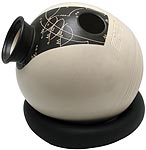
TMUD015 U15
TMUD060 U60
TMUD080 U80 |
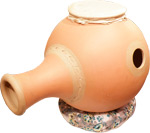
TMUD100 Udu-Bongo |
Children know very well that household utensils are wonderful musical instruments. Thus it is not a surprise that the native inhabitants of Africa (in this case, Nigeria) discovered once upon a time that their storage jugs produced interesting sounds. The Udu (pronounced Oodoo) was born. Henceforth it was played in ceremonies and for dancing. But clay jugs are used for music in other countries, too. A famous example is the Ghatam from India.
The models of Udu we present here are made in Germany. They were refined by a creative potter with musical talent.
The drum is held on the lap; one hand is placed over the side hole—while opening and closing it rhythmically you create the bass tone. Press the palm slightly into the hole while doing it! The opening of the jug is for lighter sounds. You can even use the whole body for drumming with the fingers.
U15—piccolo: pet of the family with a great sound! The removable shaker at the opening supports the sound. Easy to handle.
U80: The long neck of this model gave it its name: Neck Udu. The sound produced at the opening is high and a good complement to the bass sound
U60: Sonorous bass sounds await you! The shape is similar to the East-Nigerian type.
 |
Ghatam
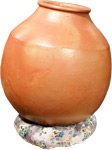
TMGH100 |
A storage pot with a difference! As man is creative and imaginative he discovered soon after the invention of pottery that pots can be used for more — for music! Thus Udus and Ghatams were born.
The Ghatam that originates from South India is of course first of all an instrument. It is made from special clay and offers a rich fullness of percussive and singing sounds. They can be elicited with fingers and palms. The play on the pot´s opening produces the bass sound. The Ghatam is placed on the lap or a thick textile ring so it can be moved to the right position.
 |
Kid-Drum Remo
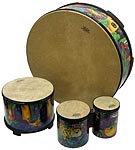
TMKD805 833 805
TMKD835 833 835
TMKD840 833 840 |

TMDB100
Kids’ Drum
coloured |
Kids like colours: that is what the creators of Remo Drums thought. They should be solid and long lasting, too. So this series of drums made from coloured plastic was born. There is something for everybody: a pair of bongos or a single piece, long or small. The timbre is rather high but they sound good. The drums can be played with the hand or with sticks, and some have a strap. Kids can have a good romp and the ears of the adults are not overstrained too much.
 |
Kid-Drum Reno Drum
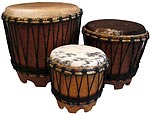
TMKD001 BL 143,01
TMKD002 BL 143,02
TMKD003 BL 143,03 |
For children, drums can never be too solid or too loud, as they have to withstand their overflowing life energy! The Kid Drum series of Reno offers exactly these qualities. The drum body is made from solid wood covered with thick cow skin which invites you to sit on it. In that way the drum fulfills two roles at the same time: a percussion instrument and a stool. A great advantage is that the drum need not be tilted or held for playing: it has feet so that the sound can unfold naturally.
Different sizes correspond to different needs, hence sonority and timbre vary. They're very enjoyable!
 |
Drum Cases
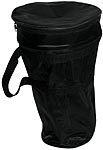
Darbuka Case
ZUDT001
Black plastic |

Djembe Case ZUDJ001
"Flight Case" thick upholstery
on request |
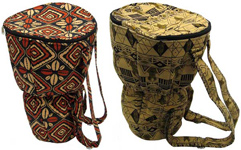
Djembe Case
ZUDJ002
African material, padded, on request |
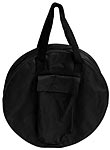
Frame Drum Case
ZURT001
On request |

Shaman Drum Case
ZUST001
On request |

Bodhran Case
ZUBT001
On request |

|
|
Copyright © Gandharva Loka |

